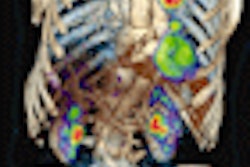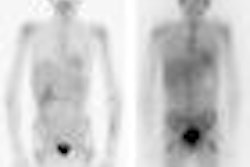The National Institutes of Health (NIH) has awarded a four-year, $2 million grant to researchers at West Virginia University (WVU) in Morgantown for a hybrid positron emission mammography (PEM)/PET system.
The money will be used, in part, to incorporate x-ray/CT technology into the device.
According to WVU, the system is the only one in the world that combines PEM and PET to image breasts and guide the biopsy of suspicious areas detected in those images.
The project is led by Raymond Raylman, Ph.D., professor and vice chair of research in WVU School of Medicine's radiology department. PEM/PET technology originally was developed by the radiology research group through a $1.7 million NIH grant.
WVU is collaborating on the system with the University of Washington in Seattle, the University of Maryland School of Medicine in Baltimore, and Xoran Technologies, an Ann Arbor, MI-based company that specializes in small CT scanners.
In addition to the new hardware, the NIH grant also will fund a clinical trial of 300 breast cancer patients expected to begin in two years, once the new hardware is assembled. According to WVU, a test of the current system with six breast cancer patients produced a clear look at tumors and, in at least one case, showed a cancerous infiltration into a mammary duct that remained invisible on a mammogram.
Ultimately, researchers expect that the device will be used to detect very small tumors, even in dense breasts that traditionally produce less-than-optimal mammography scans. Scanning time on the current system is less than 10 minutes per patient.
Related Reading
Breast imagers, ahoy: New technology on the horizon, August 20, 2009
PEM may reduce false-positive reports, December 3, 2008
PEM performs well against breast MRI, whole-body PET, June 6, 2007
PEM turns in solid results for detecting breast malignancies, November 10, 2005
PEM development picks up pace, February 7, 2005
Copyright © 2009 AuntMinnie.com




















